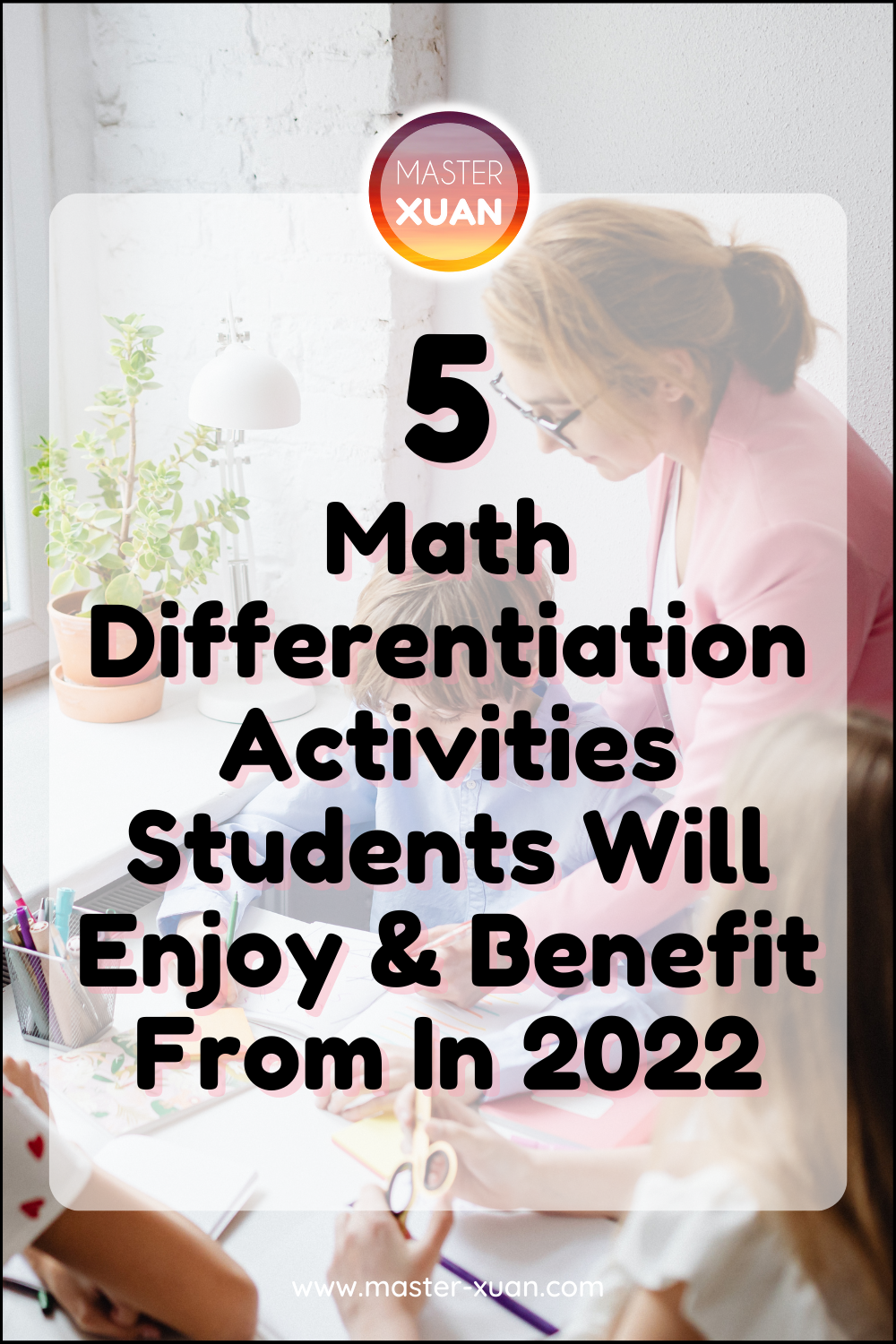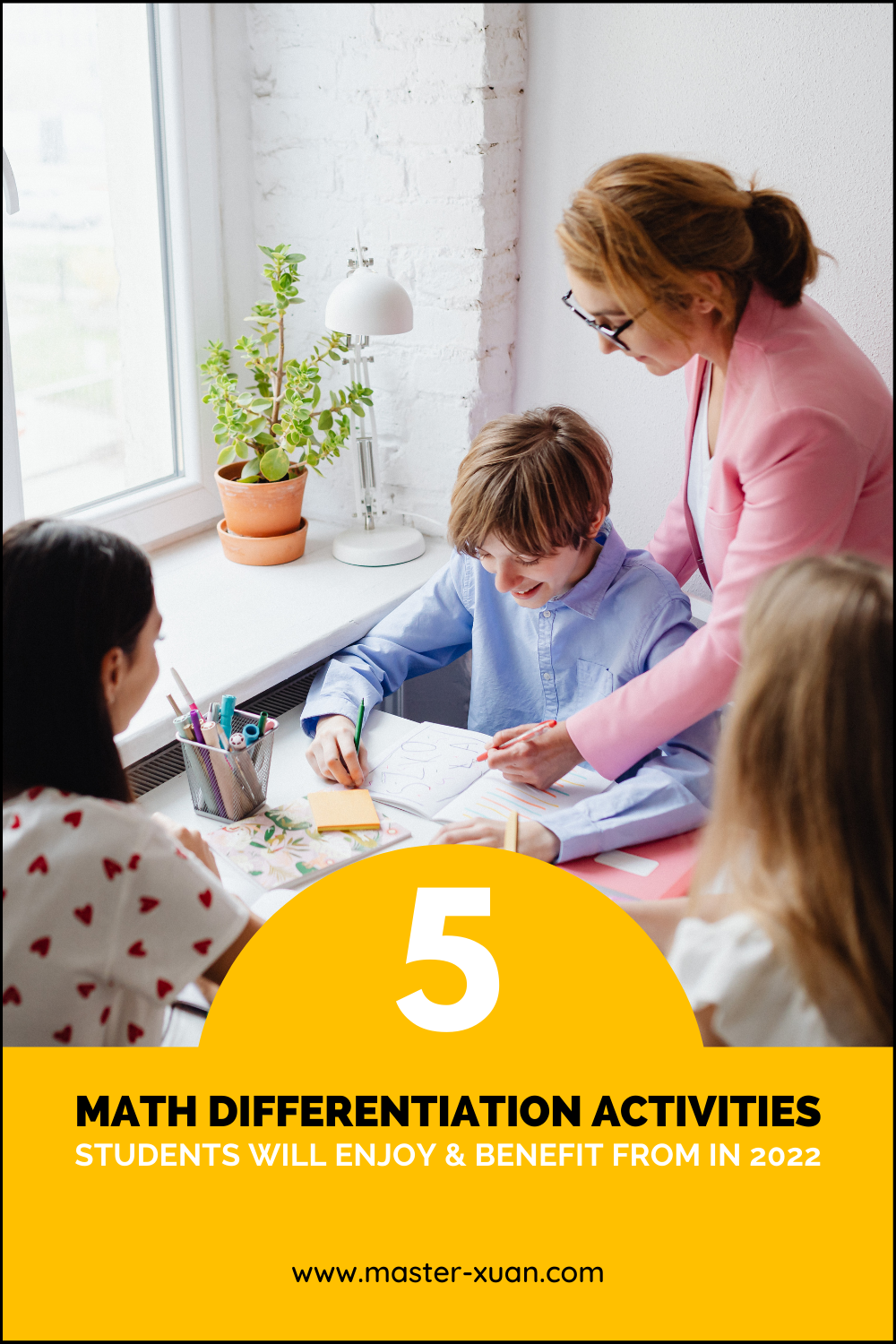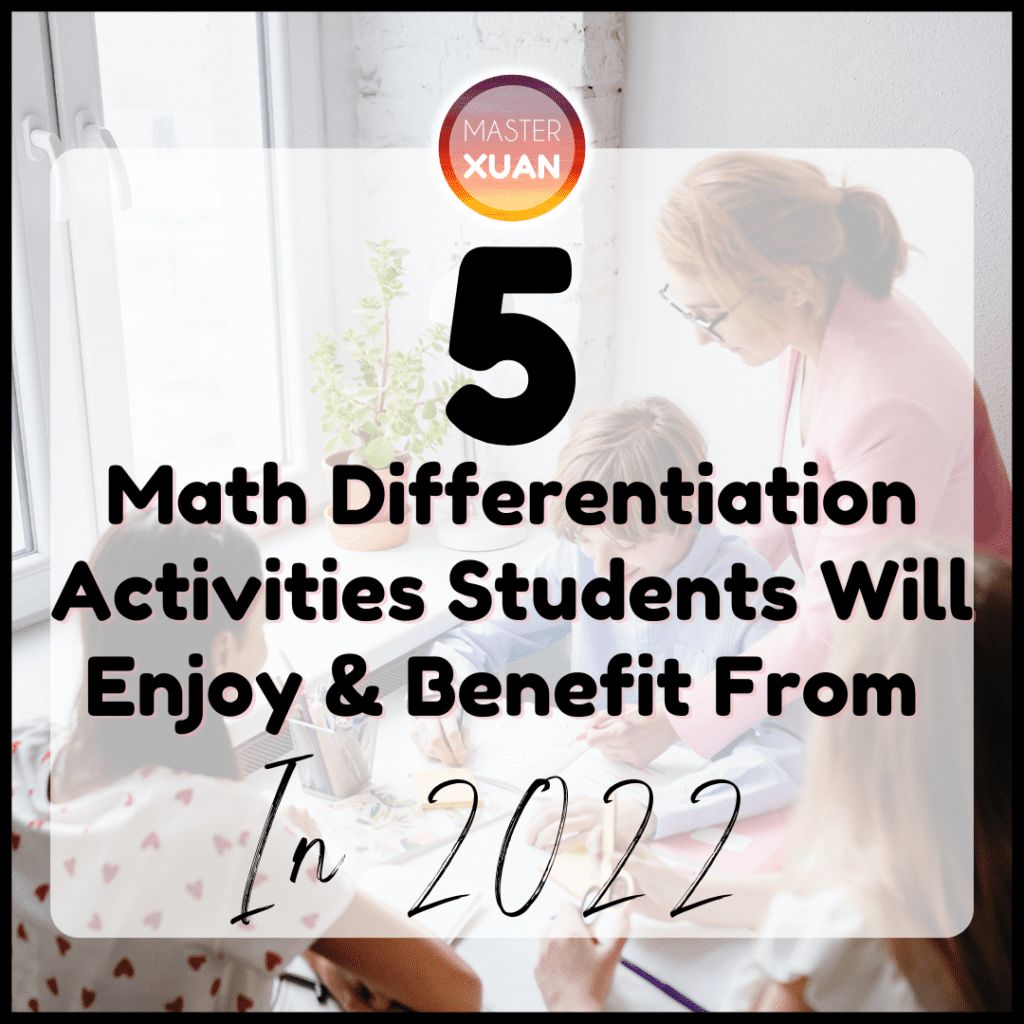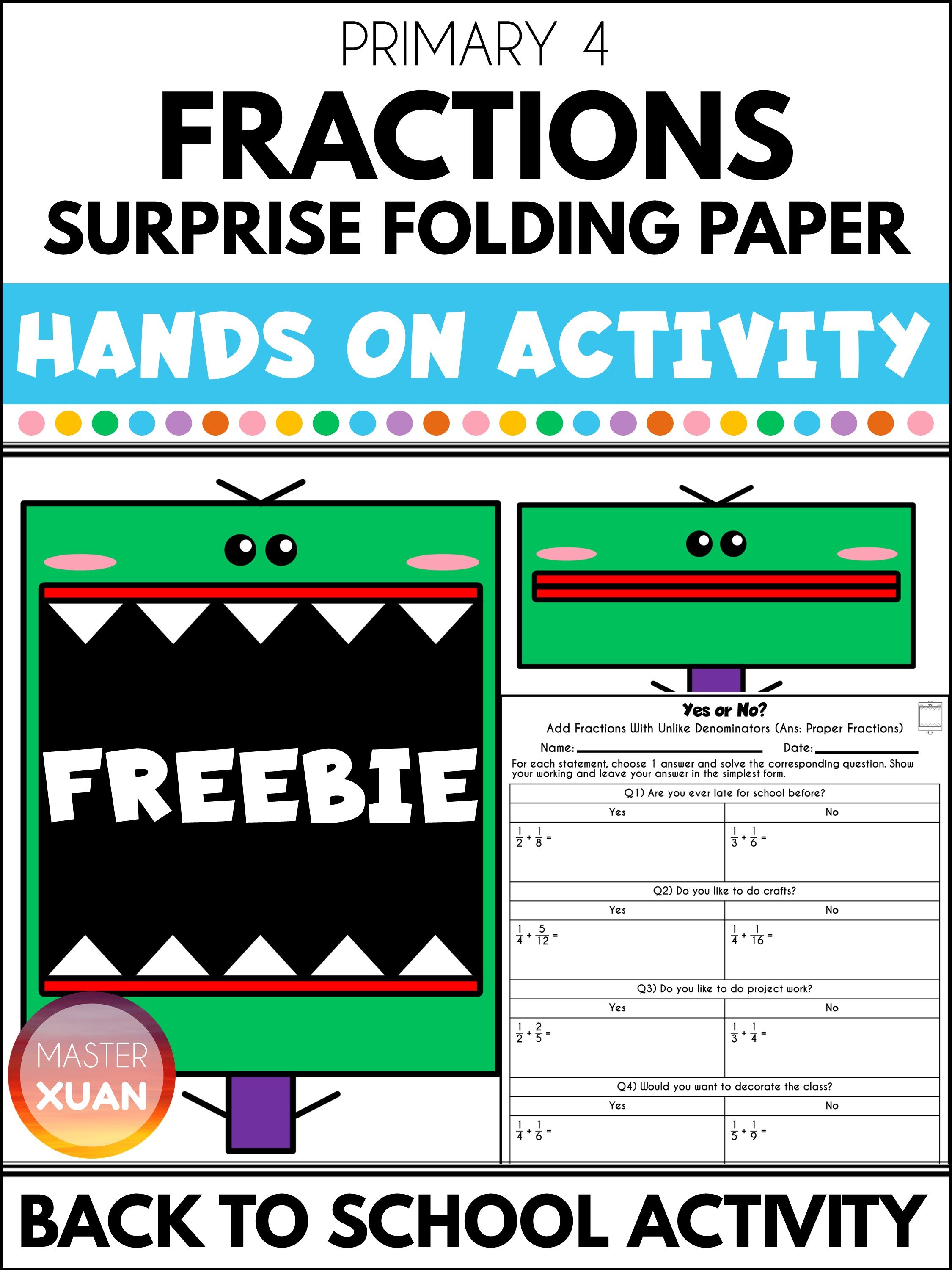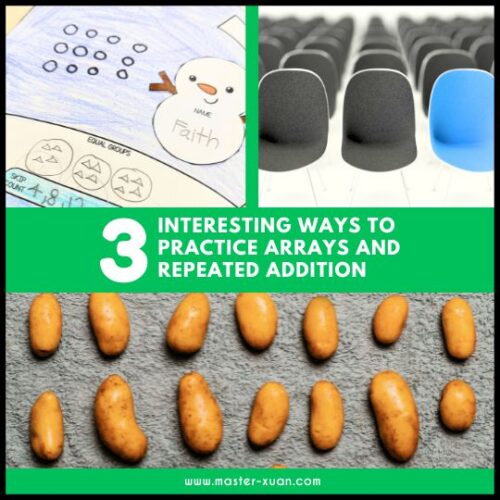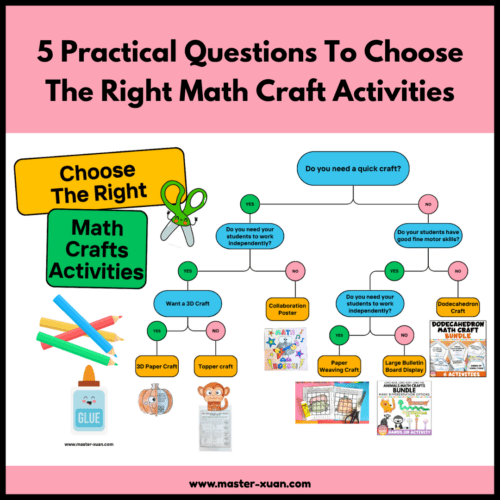Are you looking for examples of math differentiation activities? Or heard that it is essential for class but not very sure what that means and how to implement it?
I totally understand. Differentiation for math can be challenging but being the superstar teacher you are, you want to learn more about them and use them to improve your teaching.
This blog post will answer the following questions you might have about differentiation:
- What does differentiation mean?
- Why is differentiation important in the classroom?
- What is Differentiation in Math?
- How to differentiate in math?
- Can you share with me 5 math differentiation ideas?
What Is Differentiation?
Differentiated instruction or differentiation is the process of providing different ways to understand new information and tailoring instruction to meet students’ individual needs in the same classroom regardless of their differences in their ability.
We can differentiate:
- Content
- Definition: The materials that we give students.
- Based on students’ interests, learning profiles, and academic readiness.
- We can provide math resources that are more challenging or simplified.
- Process
- Definition: How to teach or how students learn it.
- Teach individually, assign problems to partners or small groups
- Product
- Definition: How students show what they have learned.
- This may take the form of tests, videos, writing, and presentations.
- Effects
- Definition: The learning environment (classroom) and cultures
- The physical layout of the classroom and how the teacher uses the space to cater to different activities (independent work and group work etc.).
- And create an environment that is positive, safe, and supportive for each student.
Why Is Differentiation Important?
It is especially important to differentiate instruction in math because it helps all students within a classroom to achieve maximum growth as a learner. It also improves engagement in class.
Personally, I feel that it helps reduce the stress of the slower learner and avoid boredom for the faster learner. It helps students build confidence in their understanding of the concepts.
What Is Differentiation In Math?
Differentiation in math refers to the various strategies, techniques, and adaptions that you can use to ensure every student in the classroom learn math effectively.
How To Differentiate In Math?
Other than the above explanation on how to differentiate in general, here are some more tips.
First, you need to gain some data from your students. Learn about their interests and strengths through conversations and formative assessments.
Once you gain enough information, here are some ways you can differentiate math.
- Do themed projects or classroom transformations based on students’ interests.
- Select activities and games based on students’ interests.
- Project-based activities with different expectations.
- Break down new concepts into smaller steps.
- Choose worksheets that have different difficulty levels.
Even though the slower learner gets an easier version, that does not means they will forever be of that standard. Instead, it just means that they need a longer time.
5 Fun & Engaging Math Differentiation Activities
An easy way to provide differentiated learning is to choose activities with different difficulty levels or different math skills. This way the slower learner gets more scaffolding while the faster learner gets to challenge themselves. Students also get to practice pre-requisite skills if needed.
Here are the 5 fun and engaging activities that can help you in math differentiation.
The Multiplication Activity
Multiplication Christmas Games are fun and students will be engaged as they practice their multiplication fact fluency from 2 to 10 with these math activities for Christmas!
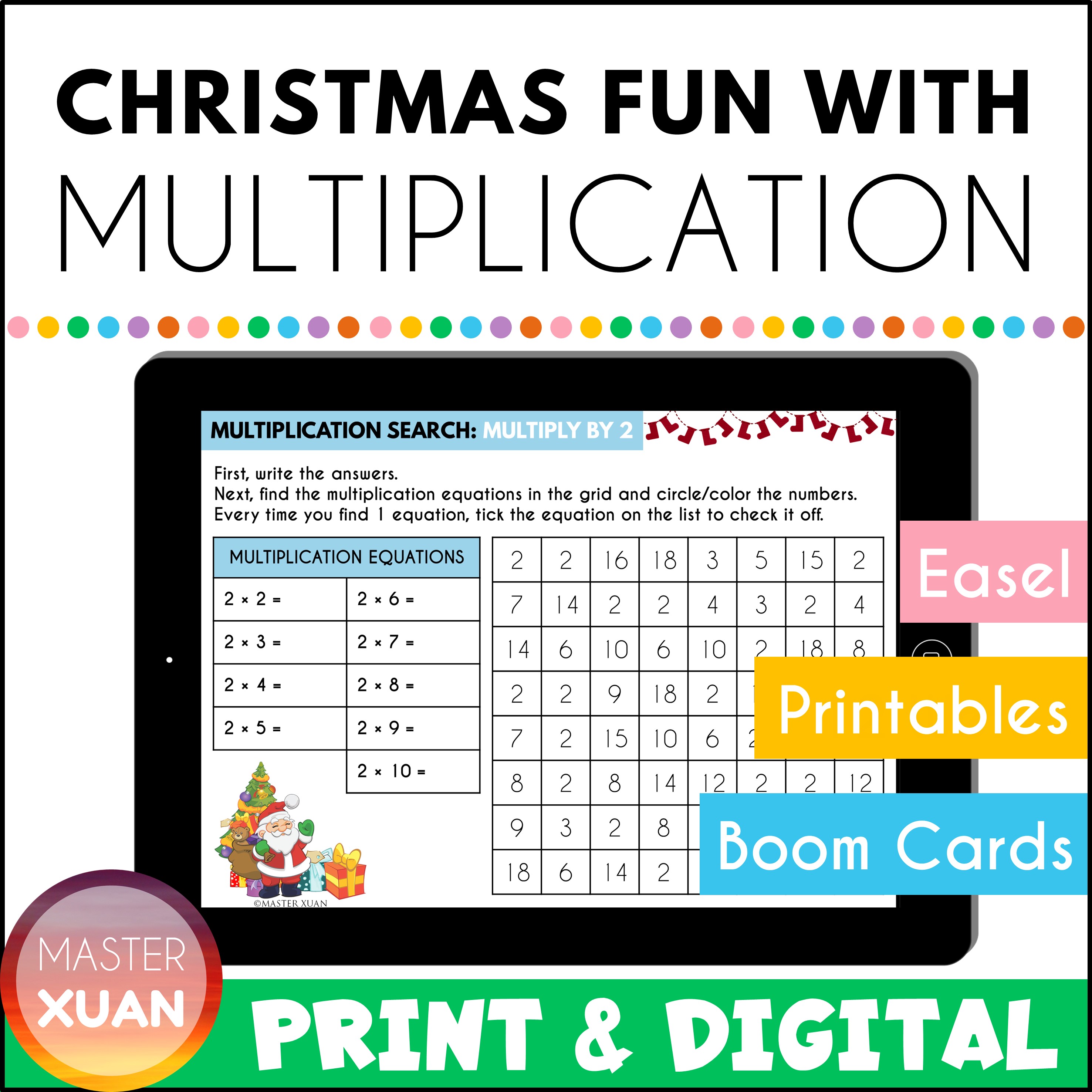
Differentiation:
- You get to choose which math facts to practice.
- You get to choose what medium (printable or online) is best for your students.
The Long Division Activity
Division For 4th Graders requires students to learn how to divide up to 4 digits by 1 digit. Students learn different facts as they answer questions.
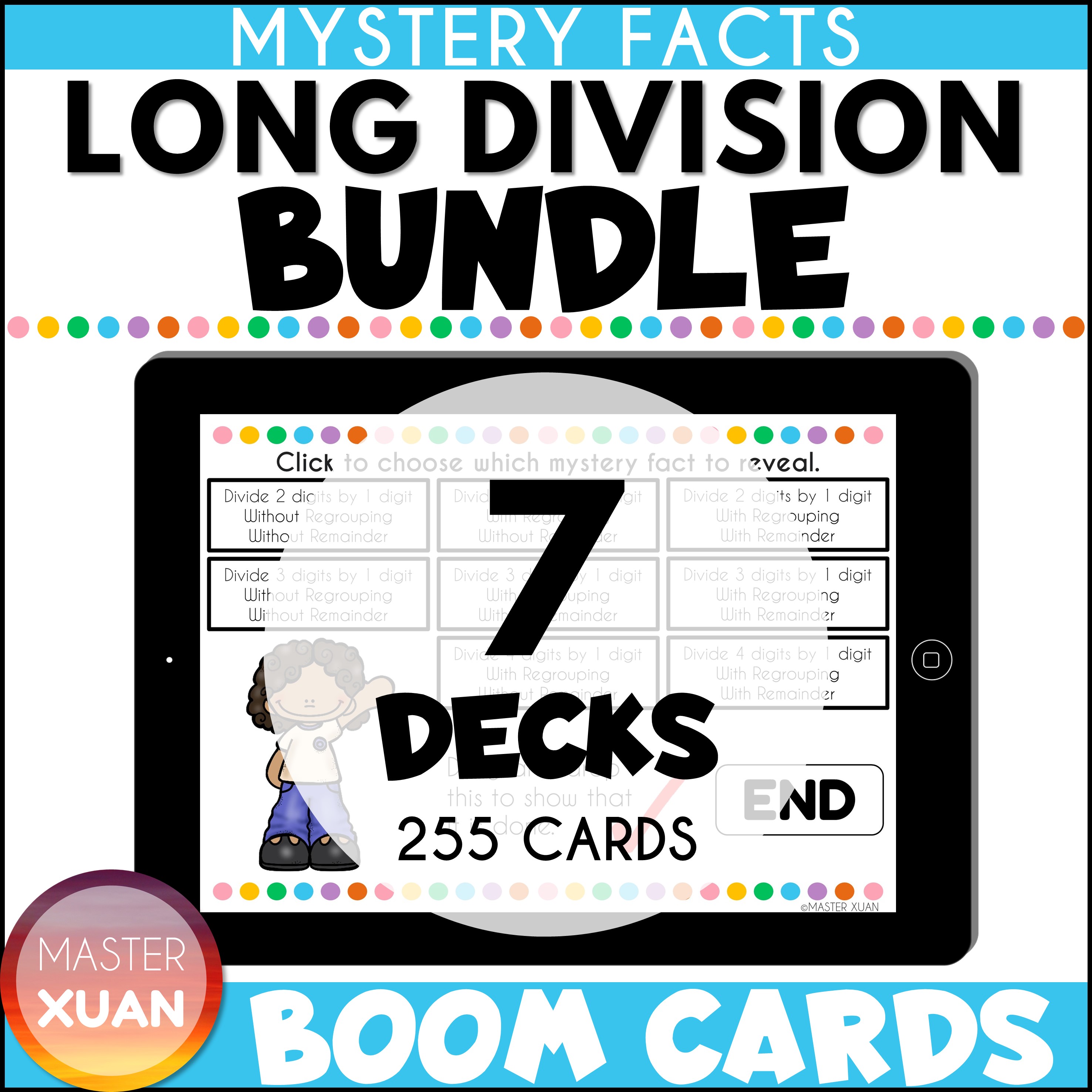
Differentiation:
- Choose the themes that meet your students’ interests.
- Choice board: allows students to choose which to do based on their abilities.
The Fractions Activity
Fractions Hands On Activities let students make choices, let others know more about themselves, practice fractions, color, cut, paste, and fold.
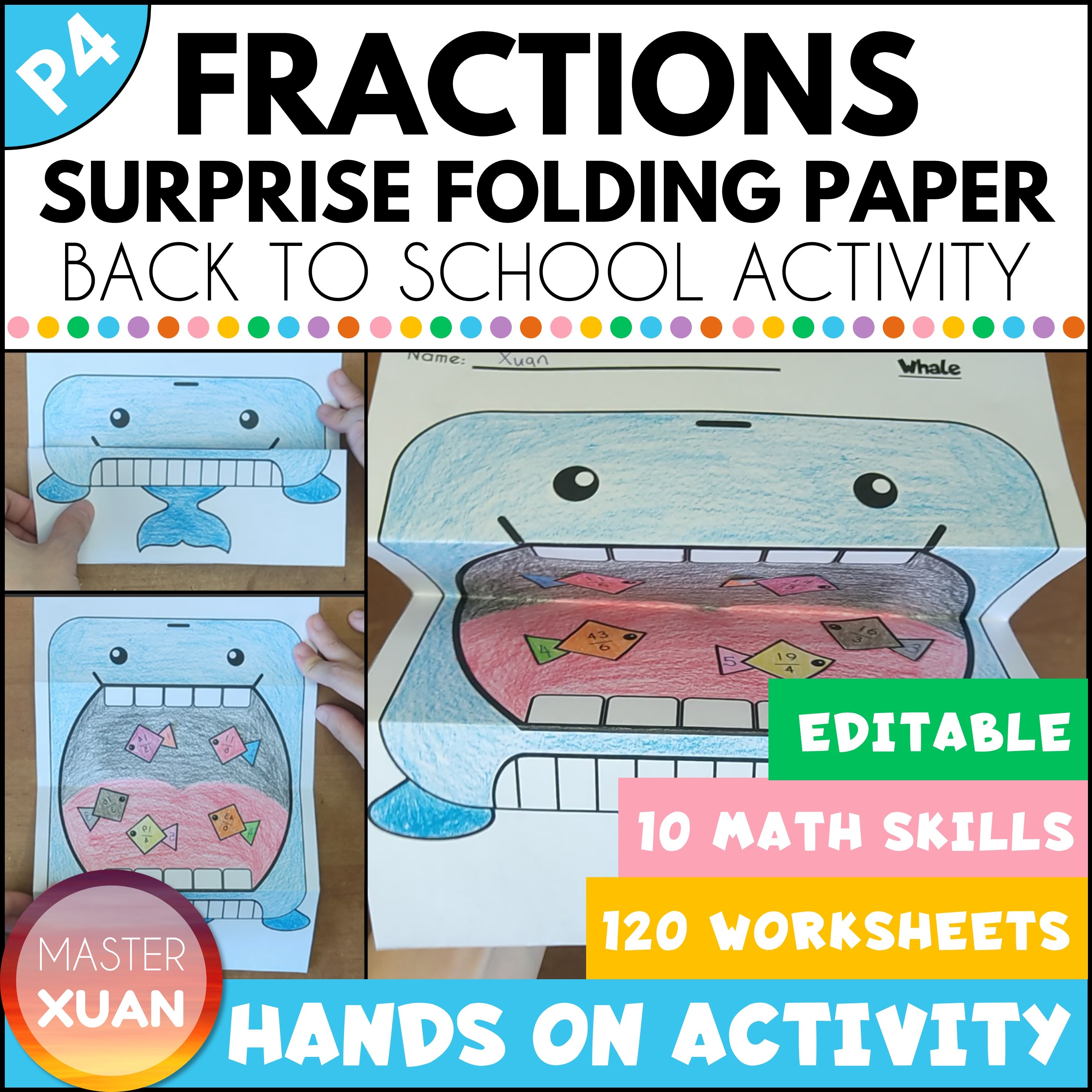
Differentiation:
- This resource has 4 different craft images and 4 sets of worksheets with different difficulties and skills.
- You get to learn more about your students.
- This hands-on activity may cater to students with kinesthetic learning styles.
The Ratio Activity
Ratio Activity For 6th Grade involves math logic puzzles and a scavenger hunt. Get your students up and moving by making them search for clue cards, solve the questions to get the correct clues and finally deduce who is the culprit.
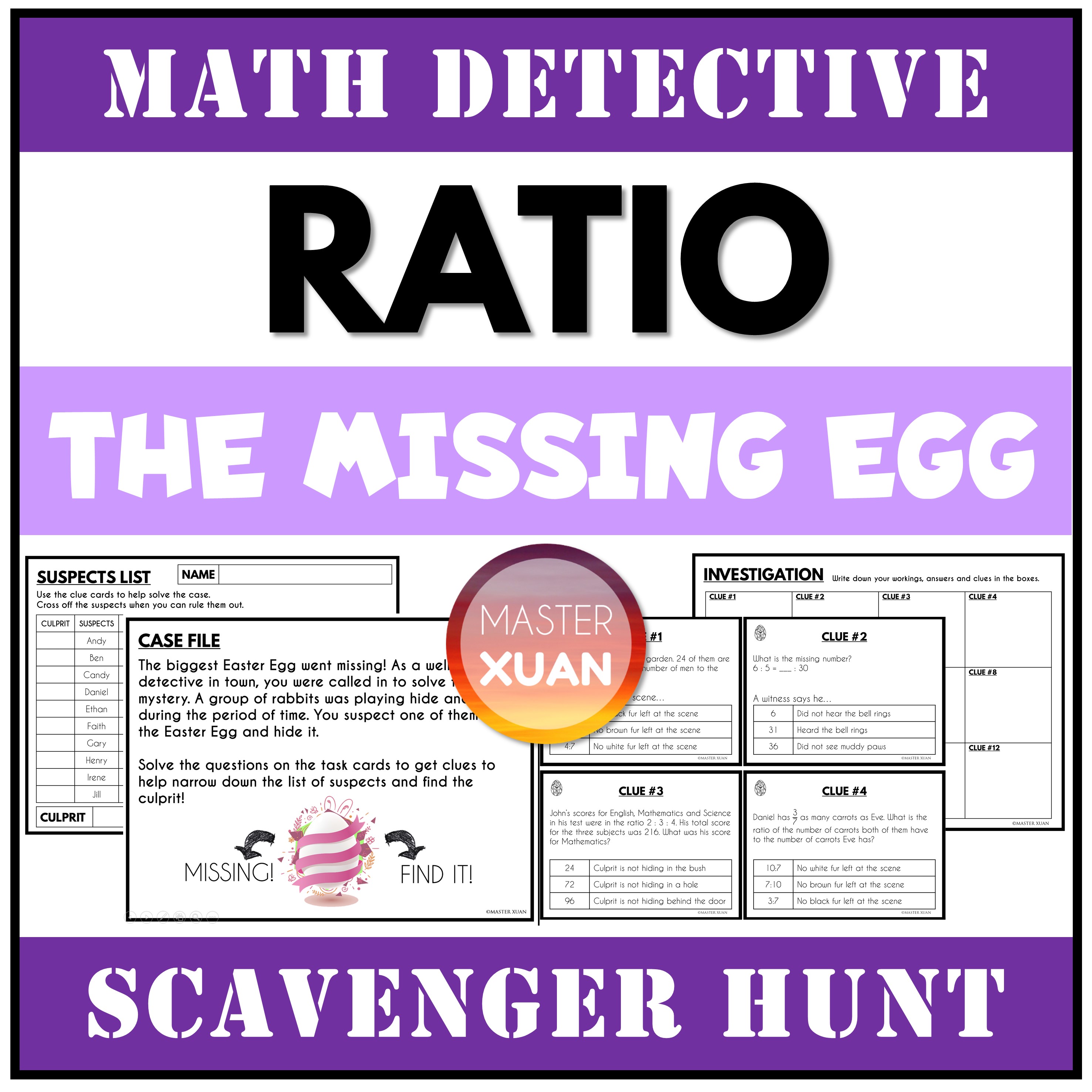
Differentiation:
- 3 different difficulty levels.
- Easter and detective themes may meet your students’ interests.
- Math logic puzzles and scavenger hunt provides alternative form of ways to practice math skills.
The Percentage Activity
Percentages Word Problems Worksheets allow students to have some FUN while doing some rigorous word problems practices.
These no prep worksheets require students to solve questions to find the correct clues. These clues will help them find out who is the culprit!
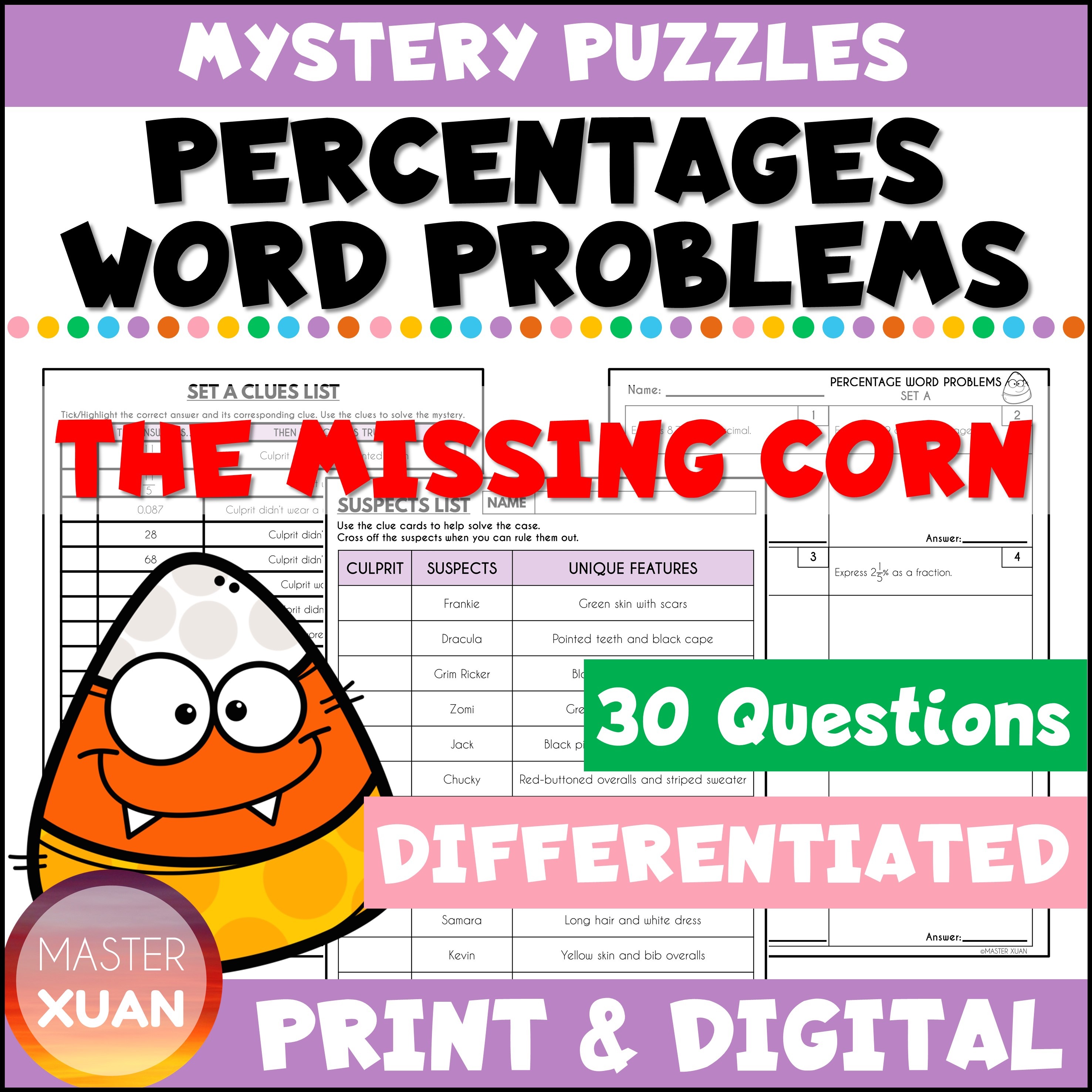
Differentiation:
- 3 different difficulty levels with different numbers of questions.
- The candy corn / Halloween theme may meet your students’ interests.
Conclusion
Now that you have a better understanding of what’s differentiation, why it is important, how to differentiate, and the 5 amazingly fun math differentiation activities, it is time to utilize the knowledge!
You can start by grabbing one of the five math differentiation activities to save you time. Then start thinking about how you can revise your lesson plan to meet the needs of each and every student.
A differentiated math centers will benefit your students.
Instead of just meeting students’ learning profiles, consider meeting their interests instead. Students will be motivated and feel accepted when they know you care and know them.
Related read:
- Using Scaffolding For Learning Math Effectively In 9 Simple Ways
- 3 Easy & Simple Ways To Reduce Stress When Teaching In Small Groups
Here are some pins that you can save to bookmark this post. Save them to your Pinterest Board now! ↓
